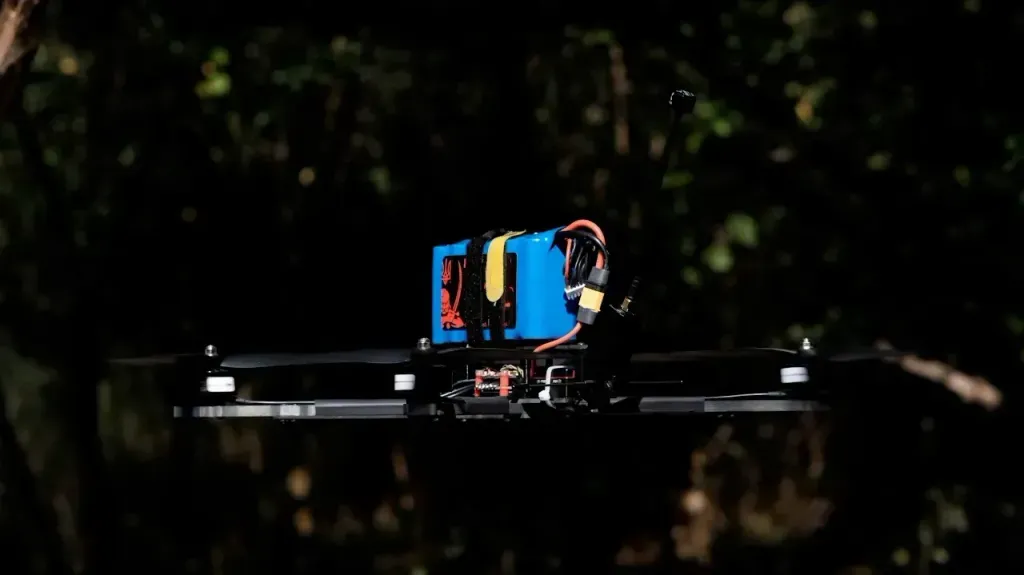Ukraine’s Defense Ministry Approves the Baton Drone for Military Use
Ukraine’s Defense Ministry announced on February 10 that it has officially approved the domestically-produced Baton drone for use by the Armed Forces. The Baton, whose name translates to "a loaf of bread" in Ukrainian, is designed to meet military requirements for simplicity and reliability in challenging battlefield conditions. Built on frames of various sizes, these drones are capable of high-speed operations, enabling them to catch up with and strike targets effectively. Additionally, the ministry highlighted that the Baton drones can operate in extreme weather conditions, including freezing temperatures and intense heat, making them versatile tools for combat scenarios.
This development is part of Ukraine’s broader focus on drone warfare since the start of Russia’s full-scale invasion in 2022. Recognizing the strategic importance of unmanned systems, Ukraine has heavily invested in the development and deployment of aerial, naval, and ground-based drones. On February 9, the Defense Ministry also launched the "Drone Line" initiative, aimed at further integrating drone technology into frontline operations. This initiative underscores Ukraine’s commitment to leveraging modern technology to enhance its military capabilities and gain an edge in the ongoing conflict.
Ukraine’s Focus on Drone Warfare and Innovation
Ukraine’s emphasis on drone technology reflects its recognition of the critical role unmanned systems play in modern warfare. Drones have proven to be game-changers in surveillance, reconnaissance, and precision strikes, particularly in conflicts where traditional military assets are limited. The Baton drone is the latest example of Ukraine’s efforts to develop reliable and high-performance unmanned systems tailored to the demands of the battlefield.
In addition to the Baton, Ukraine has also made strides in developing more advanced drone technologies. For instance, the country has produced long-range missile-drone hybrids, such as the Palianytsia and Peklo systems. These hybrid systems feature turbojet engines, offering capabilities that are alternatives to traditional cruise missiles. The Palianytsia, for example, reportedly took just one and a half years to progress from its blueprints to its first successful combat use. This rapid development highlights Ukraine’s ability to innovate under pressure and adapt to the evolving needs of the war.
Advanced Missile-Drone Hybrids: Palianytsia and Peklo
Ukraine’s development of long-range missile-drone hybrids, such as the Palianytsia and Peklo, represents a significant leap in its military capabilities. These systems are designed to combine the versatility of drones with the lethality of missiles, offering a new dimension to Ukraine’s offensive and defensive strategies. The Peklo hybrid, for instance, has a reported range of 700 kilometers (430 miles) and a speed of 700 kilometers per hour (430 miles per hour), making it a formidable weapon capable of striking deep into enemy territory.
President Volodymyr Zelensky has set an ambitious production target of at least 30,000 long-range drones by 2025, further emphasizing Ukraine’s commitment to building a robust drone fleet. The development of these advanced systems has been accelerated by the ongoing conflict, with Ukrainian officials showcasing their ability to rapidly prototype and deploy new technologies. The Palianytsia, for example, transitioned from conceptualization to combat readiness in just 18 months, demonstrating Ukraine’s agility in innovation.
Strategic Impact of Drone Technology in the Conflict
The deployment of drones like the Baton, Palianytsia, and Peklo has significant strategic implications for Ukraine’s military operations. These systems enable Ukrainian forces to conduct precision strikes, gather critical intelligence, and disrupt enemy supply lines with greater efficiency. For instance, Ukrainian forces reportedly used drones to target a key Russian oil refinery in Krasnodar Krai, a strategic logistics hub for diesel fuel and aviation kerosene used by Russian troops. This operation highlights the ability of drones to strike at critical infrastructure deep behind enemy lines, undermining Russia’s logistical capabilities and creating new challenges for its military.
Andrii Kovalenko, head of Ukraine’s Center for Countering Disinformation, noted that the refinery is located approximately 200 kilometers (124 miles) from the front line, making it a high-value target. By targeting such facilities, Ukraine aims to weaken Russia’s ability to sustain its military operations and exert pressure on its supply chains. This approach reflects Ukraine’s growing reliance on asymmetric warfare tactics, leveraging drones and other unconventional tools to offset the俄罗斯军队的规模和资源优势。
Broader Implications for Modern Warfare
Ukraine’s focus on drone technology not only reflects its immediate needs in the ongoing conflict but also highlights the broader shift in modern warfare. Unmanned systems are increasingly becoming integral to military strategies worldwide, offering advantages in terms of cost, flexibility, and reduced risk to human lives. Ukraine’s rapid development and deployment of advanced drones demonstrate how smaller nations can leverage technology to challenge larger adversaries.
The success of Ukraine’s drone program has also drawn international attention, with many analysts viewing it as a case study in innovation under adversity. The country’s ability to develop and deploy cutting-edge systems despite resource constraints underscores the importance of partnerships, domestic innovation, and strategic planning. Moreover, the use of drones in Ukraine has set new precedents for their role in future conflicts, offering valuable lessons for militaries around the world.
Conclusion
Ukraine’s approval of the Baton drone and its broader focus on drone warfare represent a significant milestone in its efforts to modernize its military capabilities. The development of advanced systems like the Palianytsia and Peklo hybrids demonstrates Ukraine’s commitment to innovation and its ability to adapt to the challenges of modern warfare. As the conflict with Russia continues, Ukraine’s reliance on drones is expected to grow, with these systems playing an increasingly critical role in shaping the outcome of the war.
Looking ahead, Ukraine’s focus on unmanned technologies not only strengthens its position on the battlefield but also positions it as a leader in the global race for military innovation. The lessons learned from Ukraine’s drone program will likely influence the development of similar technologies worldwide, further cementing the role of drones as a cornerstone of modern warfare. As Ukraine continues to push the boundaries of what is possible with unmanned systems, its efforts will undoubtedly leave a lasting impact on the future of military strategy and technology.












